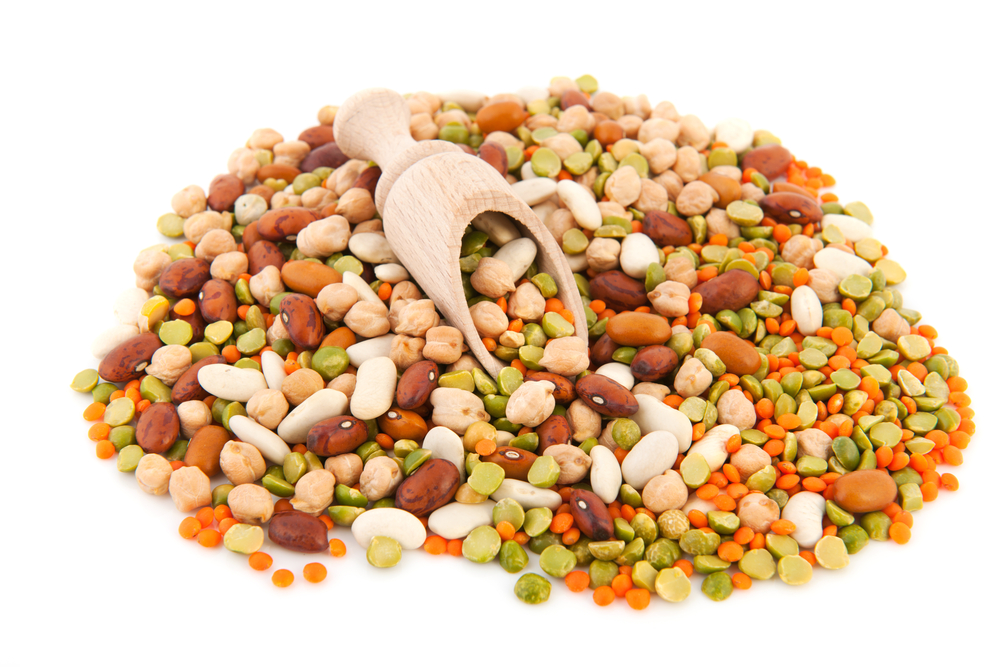Many people think soy is something that is good and healthy but unfortunately nothing could be further from the truth. It is a toxic non-food which should never be fed to man, it’s genetically modified, causes weight gain and is toxic to the thyroid gland to name a few of its many evil actions. (Plus by the way, it puts on weight). Soybeans contain phytoestrogens or isoflavones – the compounds soy is so ‘famous’ for, but these mimic estrogen in the body in the worst possible way. Soy appears to increase the risk of breast cancer according to some studies, especially if you’re exposed to high amounts of estrogen-mimicking compounds from birth as in a soy-milk replacement formula. To make matters worse, unless you’re buying USDA 100% Organic soy products, there is a strong chance are you’re buying GMO soy or feeding it to your baby, and GE crops, especially soy, has been linked to infertility.
Are you Eating Foods high in Phytates and Lectins?
These are compounds found in legumes, soybeans, grains and pulses generally, as well as some other foods. The thing that makes them something we don’t really want to eat is the actual proteins present which are able to wreak havoc with our intestines. An article in Pubmed (http://www.ncbi.nlm.nih.gov/pubmed/25599185) states: “lectins can cause nutrient deficiencies, disrupt digestion, and cause severe intestinal damage when consumed in excess by an individual with dysfunctional enzymes. These effects are followed by disruption of intestinal barrier integrity, which is the gateway to various autoimmunities. Shared amino acid motifs between dietary lectins, exogenous peptides, and various body tissues may lead to cross-reactivity, resulting in the production of antibodies against lectin and bacterial antigens, followed by autoimmunity.” If it’s true that these foster gut permeability predisposing you to autoimmune conditions – do you really want to eat them? And while it’s true that there are several foods that contain them, these are the foods which have the most abundant amounts. Some nuts and beans also have varying amounts, but these can be soaked and dehydrated or cooked well to eliminate the effects. Even seafood and plants from the nightshade family have small amounts, but literally these amounts are very small by comparison to the grains, soy and pulses. Lectins can actually be quite toxic to the human body, so eating a lot of the above-mentioned foods may not be a great idea. At the very least expect digestive and long-term health problems. The castor oil bean is where a rather ‘infamous’ lectin is found – ricin – which is so poisonous it can cause death. Lectins resist even our powerful digestive enzymes passing easily through the digestive tract unchanged, but they are sticky and can attach to the walls of the intestine where they can
cause destruction of the intestinal wall and even gut permeability. The kind found in legumes is called (deep breath) phytohemagglutinins, the biggest source being uncooked legumes such as kidney beans. But if you do decide to experiment with raw kidney beans, you might find yourself getting lectin poisoning, a very sore tummy and a nasty case of the runs. At the very least you will find frequent exposure to them will cause gut permeability and damage. This is called “leaky gut” where unwelcome matter of every description will leave the safety of the gut and wander between the linings of the tight junctions into the bloodstream, causing havoc. Both LCHF and paleo diets shun the use of legumes due to their high carbohydrate levels and their lectin content, regarding them as destructive to the body, the same as grains. Yes, the lectins can be largely eliminated with cooking, but there are still some left. Soaked, sprouted and cooked legumes also have a lower level of lectins present – they are still foods that will bloat, cause discomfort and probably cause gut damage. And they are high in carbs. Rather avoid.
Phytates
Like lectins, these are compounds found in seeds as a rule, but the problem with them is that they impair mineral absorption in the body – especially iron, calcium and zinc – and people who eat a lot of them can end up with serious mineral deficiency symptoms. Phytates, like lectins, are “anti-nutrients” – they take away from the body, they do not offer anything in return. Phytates are also found in grains, a bit in nuts and even some root veggies. The foods with the highest amounts though are brans found in grains. Phytic acid or phytates reduce the absorption of 3 very important minerals, being zinc, iron and calcium, and therefore should probably not be eaten often with meals, as the minerals in those meals won’t be as well absorbed. This may be why vegetarians/vegans often have rampant mineral deficiencies as there are so few foods from which to draw their meagre amount of protein and they end up with deficiency symptoms as a result. Once in a while won’t kill you, but if a large part of your diet is made up of legumes, you may want to reconsider, especially if you are iron-deficient or vegan. Here’s why: there are two kinds of iron in nature – heme iron from animal foods and non-heme iron from plants. Whereas heme iron from animals is readily absorbed, non-heme iron is not. Heme iron is not affected at all by phytates present in foods taken with heme iron – but non-heme iron is adversely affected if phytates are eaten. If a large proportion of your diet is made of legumes and plants, and no meat. Heme iron is even helpful in absorbing non-heme iron. So in people who eat meat regularly, the odd lentil won’t pose a problem. But if you are counting carbs, it might stall weight loss

